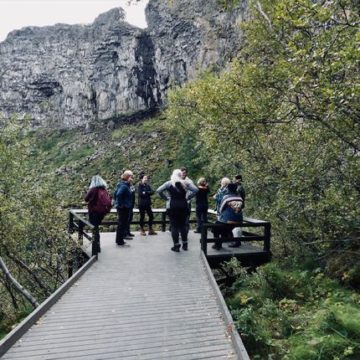Cultural Resources and Climate Change Brief

Cultural resources, which include archeological sites, cultural landscapes, ethnographic resources, historic and prehistoric structures, and museum collections, have distinct considerations with respect to climate change. Most are fixed in place or derive much of their significance from the place within which they were created. Many are nonliving, and all are unique. As a result, the capacity of cultural resources to adapt to changing environments is limited.
Impacts to cultural resources from climate change range from coastal erosion and storm damage to effects of wildfires, floods, melting permafrost and more rapid deterioration due to changing rain and temperature patterns. Cultural resources have always been subject to these types of environmental forces. However, observed and projected climate change trends are a great concern as these forces accelerate, intensify, and combine in new ways that are increasing our rate of loss of cultural resources. These trends heighten the urgency for the NPS to survey climate-vulnerable areas, develop appropriate preservation and documentation techniques, and learn from the history and prehistory these resources contain. With so many cultural resources entrusted in our care, the NPS provides leadership nationwide to their preservation and management in regards to climate change.




